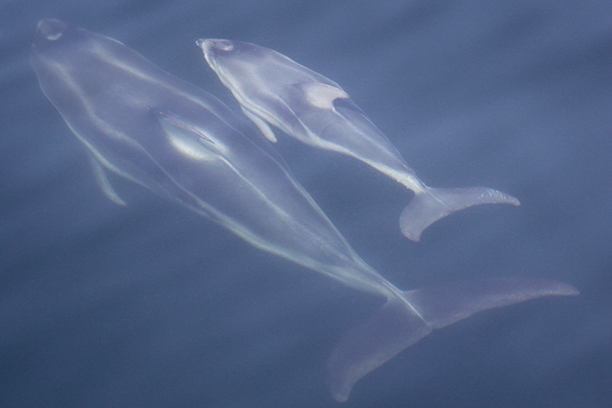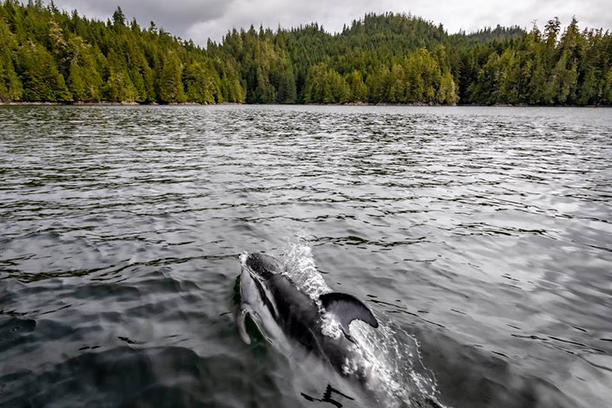“It’s always such a privilege to study marine wildlife. I am especially grateful to join Oceans Initiative in their research with Pacific white-sided dolphins in truly one of the most beautiful places on Earth.”
— Laura Bogaard
This summer marks our 11th year of Pacific white-sided dolphin research in the Broughton Archipelago of British Columbia, Canada. Since the birth of this project with Dr. Erin Ashe’s PhD research, we have learned so much about this fascinating and under-studied species. The Broughton Archipelago also provides a rare opportunity to study a generally pelagic (open ocean) species in inshore waters. We now think that this habitat may be crucial to their feeding on herring. It also acts as a nursery for rearing their babies. The initial goal of our study was to use dorsal fin photographs for identification to model population level changes from year to year. You can read more about the post-season intricacies of this work from Natalie Mastick’s blog post on our website.

It’s a 3-day trip on our research vessel, Wishart, from Seattle to Malcolm Island in British Columbia. On the way, we stopped briefly at San Juan Island to check in on our Southern Resident killer whale field team. As we navigated up the inside waters between Vancouver Island and the mainland of British Columbia, we spotted a plethora of marine mammal species including humpback whales, transient killer whales, harbor seals, harbor porpoise, Dall’s porpoise, and Steller sea lions.
We were also delighted to be joined for a few days by Ryan Tidman and Chelsea Xavier-Blower of SeaLegacy. They brought lots of creative energy (and of course, their drones) and helped us with building some fun new behind the scenes content that we are very excited to share on social media in the upcoming months.

The two action-packed weeks that followed covered three research aims: investigate the effectiveness of a fishing pinger on dolphin avoidance behavior, collect breath samples in order to better understand their individual health, and capture as many identification photographs as possible. We collected almost 700 GB of identification photos and 17 breath samples, and conducted 30 experimental trials for our pinger study. Satisfied, fulfilled, and exhausted we ended our expedition on a high note.
On our last day in the Broughton, we had a rare opportunity to re-sight my favorite humpback whale, Lucky, whom I wrote about in my first blog post as an intern three summers ago. We even got to watch as she and another humpback were bubble-net feeding! This is where humpback whales blow bubbles in a large circular motion, creating a “net” around a school of fish. Then, they lunge up through the school, mouths open wide, gulping large quantities of prey.
It is always such a privilege to study marine wildlife. I am especially grateful to join the Oceans Initiative team in one of the most beautiful places in the world.
